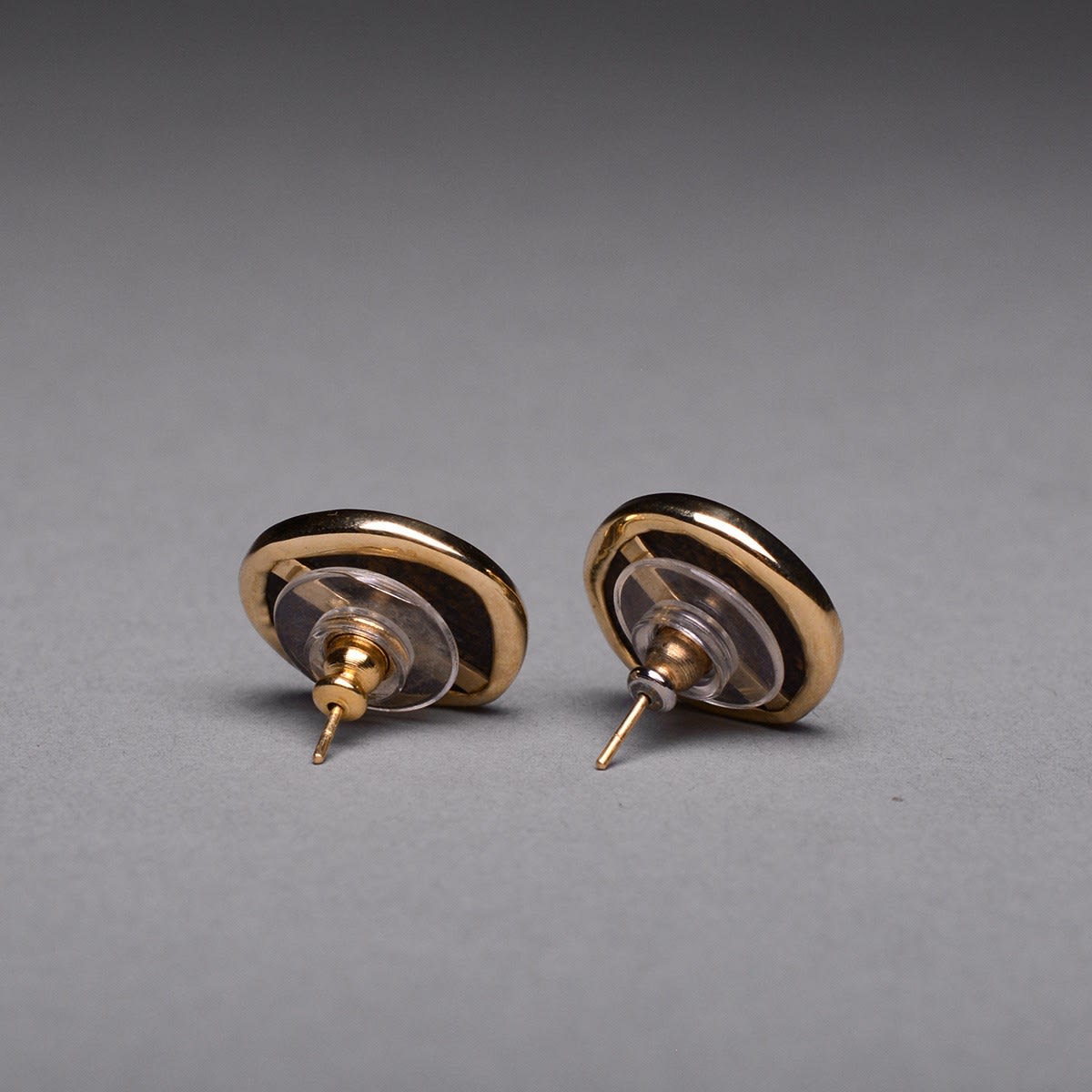Two Roman Bronze Coins Mounted in 18 Karat Gold Earings, 4th Century CE
Bronze+gold
fj.6916
Further images
1=Coin Of Emperor Gratia 2= Coin Of Emperor Constantine lavius Gratianus was the son of the Emperor Valentinian I and his wife Severa. While still a young boy, he was...
1=Coin Of Emperor Gratia 2= Coin Of Emperor Constantine lavius Gratianus was the son of the Emperor Valentinian I and his wife Severa. While still a young boy, he was bestowed the rank of Augustus by his father in 367 A.D. When his father died in 375 A.D., he became sole emperor in the West at the age of fifteen. Shortly thereafter, he proclaimed his four-year old brother Valentinian II co-Augustus. After Valens' disastrous defeat by the Goths at Adrianople in 378, Gratian asked Theodosius the Great to become emperor in the East. Though Theodosius' father had been executed after falling out of favor with Valentinian I, Theodosius accepted the job and immediately began to put his wide military talents to strengthen up the East. In 383, the British troops rebelled and invaded Gaul, led by Magnus Maximus. Gratian was not adequately prepared to meet this threat and his soldiers deserted him as well. Gratian had never been very popular with the army because he preferred hunting and sports to leading men into battle. Unable to escape his mutinous army, Gratian was murdered in Lugdunum on August 25th, A. D. 383. How many hands have touched a coin in your pocket or purse? What eras and lands have the coin traversed on its journey into our possession? As we reach into our pockets to pull out some change, we rarely hesitate to think of who might have touched the coin before us, or where the coin will venture to after it leaves our hands. More than money, coins are a symbol of the state that struck them, of a specific time and location, whether contemporary currencies or artifacts of a long forgotten empire. This stunning hand-struck coin reveals an expertise of craftsmanship and intricate sculptural detail that is often lacking in contemporary machine-made currencies. This coin is a memorial to an ancient emperor passed from the hands of civilization to civilization, from generation to generation that still appears as vibrant today as the day it was struck.
onstantine I, called Constantine the Great, was the first Roman ruler to be converted to Christianity. He was the founder of Constantinople (present-day Istanbul), which remained the capital of the Eastern Roman (Byzantine) Empire until 1453. Constantine the Great unified a tottering empire, reorganized the Roman state, and set the stage for the final victory of Christianity at the end of the 4th century. Many modern scholars accept the sincerity of his religious conviction. His conversion was a gradual process; at first he probably associated Christ with the victorious sun god. By the time of the Council of Nicaea (325), however, he was completely Christian, but still tolerated paganism among his subjects. Although criticized by his enemies as a proponent of a crude and false religion, Constantine the Great strengthened the Roman Empire and ensured its survival in the East. As the first emperor to rule in the name of Jesus Christ, he was a major figure in the foundation of medieval Christian Europe.
onstantine I, called Constantine the Great, was the first Roman ruler to be converted to Christianity. He was the founder of Constantinople (present-day Istanbul), which remained the capital of the Eastern Roman (Byzantine) Empire until 1453. Constantine the Great unified a tottering empire, reorganized the Roman state, and set the stage for the final victory of Christianity at the end of the 4th century. Many modern scholars accept the sincerity of his religious conviction. His conversion was a gradual process; at first he probably associated Christ with the victorious sun god. By the time of the Council of Nicaea (325), however, he was completely Christian, but still tolerated paganism among his subjects. Although criticized by his enemies as a proponent of a crude and false religion, Constantine the Great strengthened the Roman Empire and ensured its survival in the East. As the first emperor to rule in the name of Jesus Christ, he was a major figure in the foundation of medieval Christian Europe.





